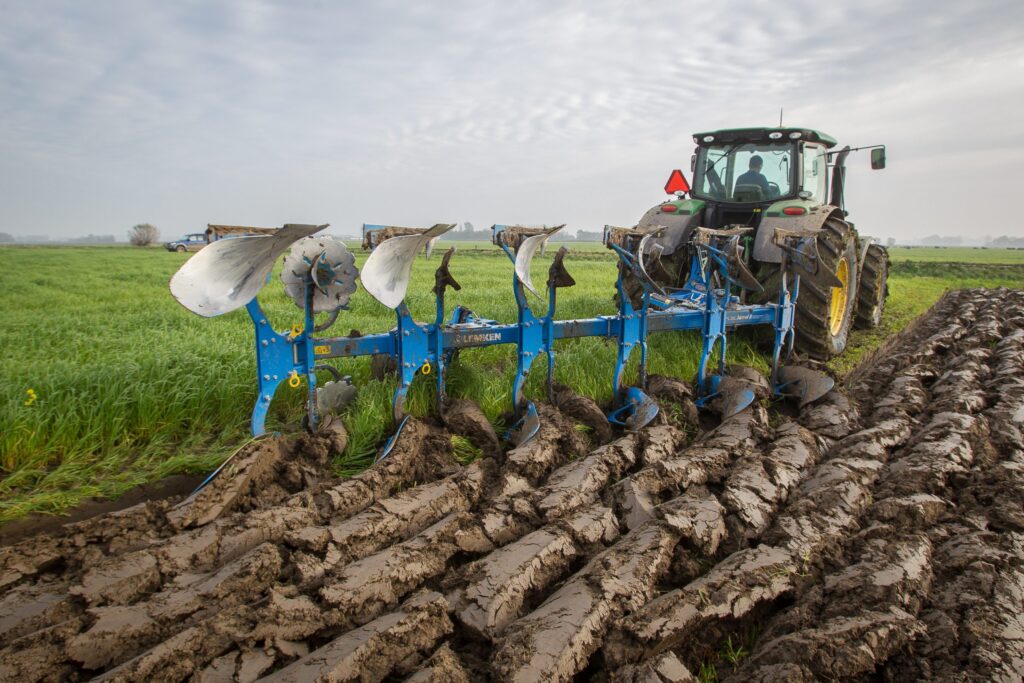
The Subterranean Symphony: Deep Tillage and the Harmony of Soil Health
Agriculture has been the backbone of human civilization, providing sustenance and nourishment for centuries. As we continue to face the challenges of feeding a growing global population, it becomes crucial to find sustainable and effective methods to improve soil health and increase crop yields. One such method that has gained recognition is deep tillage.

What is Deep Tillage?
Deep tillage, also known as deep plowing or subsoiling, is a farming practice that involves cultivating the soil to a greater depth than conventional tillage methods. Instead of just scratching the surface, deep tillage involves breaking up compacted soil layers and loosening the subsoil. This process helps improve soil structure and allows plant roots to penetrate deeper, accessing essential nutrients and water.
Improving Soil Structure
Soil structure plays a vital role in the overall health and productivity of agricultural land. Over time, the soil can become compacted due to various factors such as heavy machinery, foot traffic, or natural processes. Compacted soil restricts root growth, limits water infiltration, and hampers nutrient availability.
Deep tillage helps alleviate compaction by breaking up compacted layers and creating channels for water and air movement. This allows roots to explore a larger volume of soil, leading to better nutrient uptake and increased plant growth. Furthermore, improved soil structure enhances the soil’s ability to retain water, reducing the risk of drought stress for crops.
Reducing Salinity
Salinity is a major concern in many agricultural regions around the world. Excessive salt accumulation in the soil can be detrimental to plant growth and productivity. Deep tillage can help reduce salinity by promoting leaching, a process where excess salts are washed away from the root zone.
By breaking up compacted soil layers, deep tillage allows water to penetrate deeper into the soil profile, carrying away salts that would otherwise accumulate near the surface. This helps create a more favorable environment for plant roots, reducing the negative impact of salinity on crop yields.
Reduce pests
Deep tillage helps reduce pests by lowering the surface, forcing overwintering pests to burrow into the soil. This exposes underground pests to the surface, ultimately reducing the incidence of pests and weeds. This is particularly beneficial for maintaining crop health and minimizing damage.
Fall preparation
Deep plow in the fall, turning over topsoil that may have lost nutrients, removing weeds and corn stalks, and burying the stalks underground. This thorough preparation helps reduce weed damage the following year and ensures a fertile base for future crops.
The Three-Year Farming Cycle
Deep tillage is often incorporated into a three-year farming cycle to maximize its benefits. The cycle typically involves:
- Year 1: Deep Tillage – The first year focuses on deep tillage to break up compacted soil layers and improve soil structure.
- Year 2: Surface Tillage – In the second year, surface tillage is performed to maintain the improved soil structure and prepare the seedbed for planting.
- Year 3: No Tillage – The third year involves minimal or no tillage to allow the soil to rest and regenerate. This helps preserve the improved soil structure and minimize erosion.
By following this three-year cycle, farmers can reap the long-term benefits of deep tillage while maintaining soil health and sustainability.
Loose soil to prevent evaporation: deep plowing
agriculture, the concept of deep tillage is often referred to as “松土防蒸发” (sōng tǔ fáng zhēng fā). This practice emphasizes the importance of loosening the soil to prevent excessive evaporation and improve water retention. Deep tillage plays a crucial role in this process, allowing the soil to absorb and retain more moisture, reducing the need for frequent irrigation.
As we continue to face the challenges of climate change and a growing population, deep tillage emerges as a valuable tool in sustainable agriculture. By improving soil structure, reducing salinity, and following a three-year farming cycle, farmers can enhance soil health, increase crop yields, and contribute to a more resilient and productive agricultural system.
So, let’s dig deep and embrace the agricultural importance of deep tillage!



